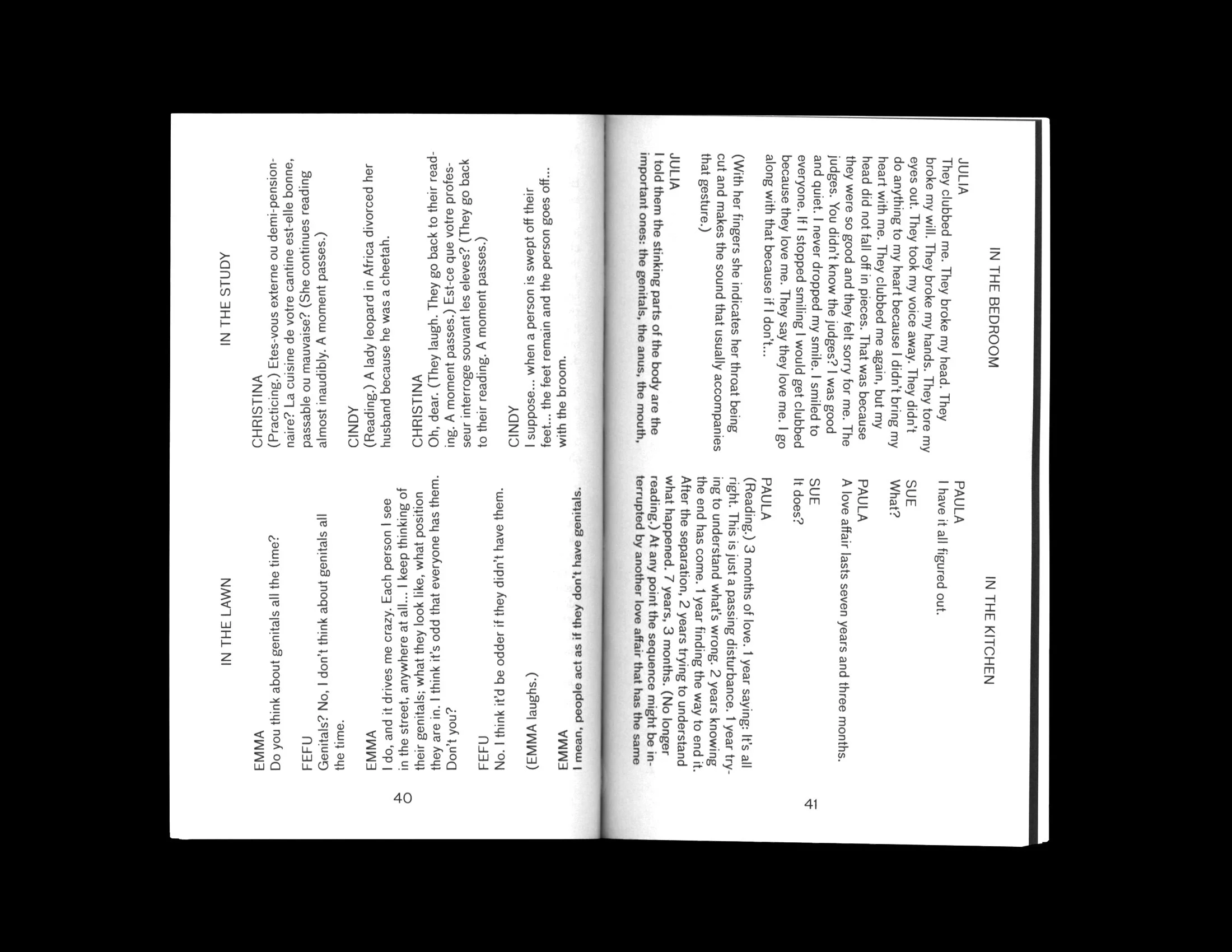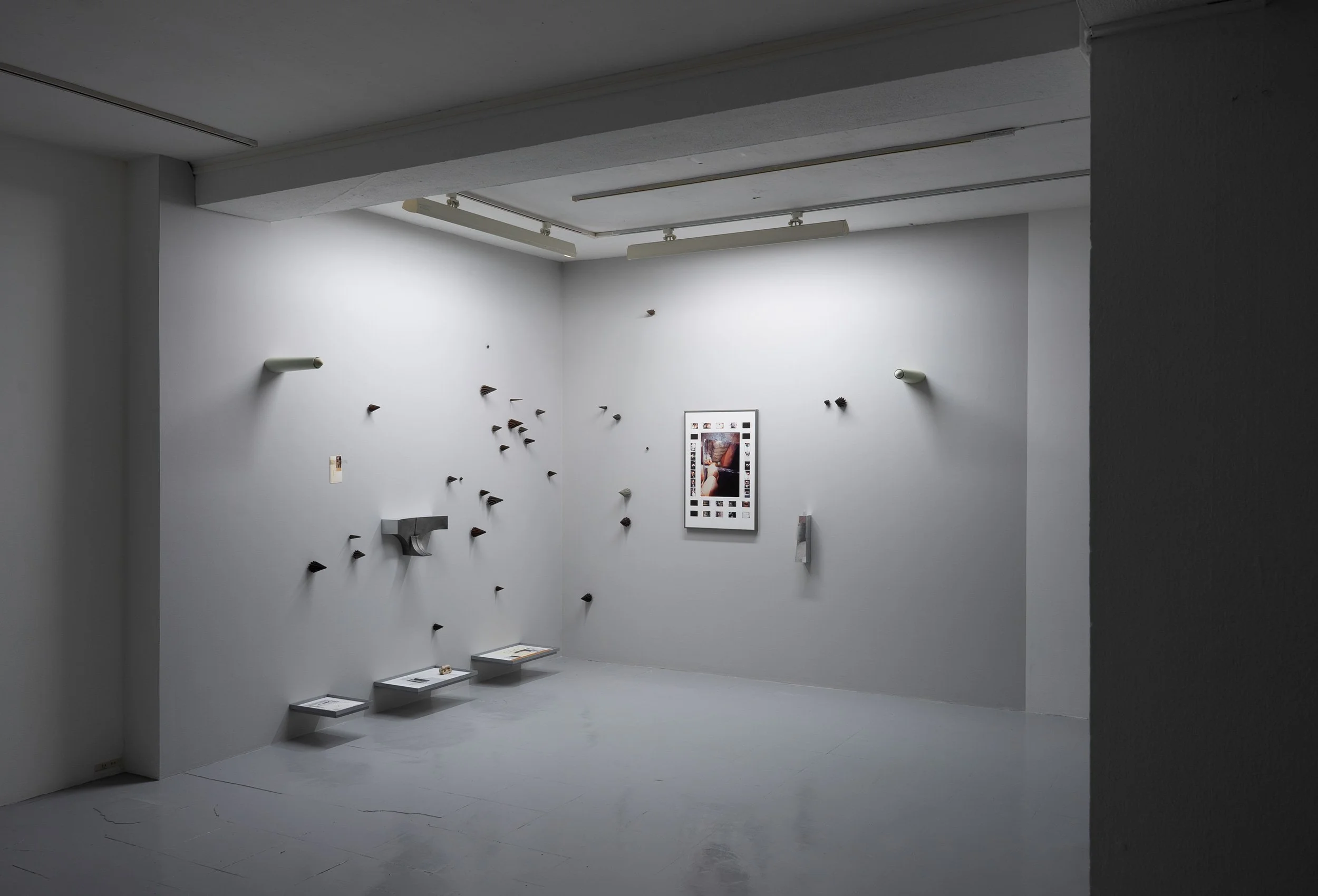PAST WRITERS-IN-RESIDENCE
Luiza Dale
May-August 2025
Dale worked on a play tracing the experiences of a group of students and a teacher who gather twice a week for an introduction to visual art class. In art class, participants look at the art. This play asks people to look at the participants.
Chris Domenick
May-August 2025
Chris developed a manuscript comprising stories and texts on, of, and about art handling. The texts include fictional accounts of a day at work, experimental manifestoes on the built environment, glib descriptions of the stewards of high-end cultural commodities, and uncouth interactions of independent contractors. These stories focus on the culture surrounding the art object: they deal with class, masculinity, community, the professionalization of the art world, and the various invisible labor latent in high culture and its contexts.
B. Ingrid Olsen
May-August 2025
Olson collected, reviewed, edited, and drafted notes about her artwork, studio process and life. Further developing a practice of writing in tandem with making visual art, she honed the act of journaling, or sketching—whether to explicate the underpinnings of an artwork, or to simply mark seemingly mundane encounters or experiences.
January-April 2025
Graham developed Prop Comic: an act in which the “props” are forms of technology, nets not networks, that the performer is getting tangled in and at the same time trying to detangle. The act is filled with small details, the audience is given a number of choices for what to pay attention to. None of great importance but they keep coming like a series of tableaus. These details form a pile and that's when they start meaning something.
Katz Tepper
January-April 2025
Katz developed their essay, “Stupid Stupid Unsubtle Stupid,” which draws from autotheory, prose poetry, stand up comedy, and performance to illuminate a web of associations and critical questions emerging from the true story of the writer’s bathtub filling with feces. The essay writes into the feces-filled-bathtub event to consider disability’s capacity to rupture the everyday, and in so doing, to gesture toward an otherwise.
Liat Berdugo
September-December 2024
Liat worked on an expansion of her 2023 project and artist book titled Seeing it for the Trees, which critically examines the role of forests in the formation and maintenance of Zionism as a settler-colonial project. In this work, Liat unpacks archival photographs from the Keren Kayemet L’Israel - Jewish National Fund, alongside personal family photos, to ask what a close reading of images can untangle about land, ecology, and nationalism. Central to this project is the question of how to make creative work as a parent, and how questions of family legacy become more urgent upon having a child.
Erin Elder
September-December 2024
Erin refined the manuscript for Into the Folding Swell, an illustrated work of creative nonfiction that takes place in the canyon country of southeast Utah amid coal mines, military bases, Mormon settlements, National Parks, powerful rivers, enormous rock bodies and unpredictable weather. The story connects black bears, cottonwoods, and landforms of distinct places to broader stories of drought and development, prophecy and redemption, impact and obsolescence.
Sara Greenberger Rafferty
September-December 2024
Sara worked on a book chronicling images and image-objects that she has used, quoted, reproduced, and represented in her decades-long art career, which spans the dawn of the twenty-first century. In many cases, the pictures conjured – and their cultural significance and meanings – are vestiges, leftovers from a previous import. It’s a book about work, and caring about the world.
September-December 2024
Allison worked on a book of creative nonfiction about multilingualism and creative practice in US and Canadian art and design schools. This collection of essays brings together multiple voices, references, and forms to think beyond the monolingual-multilingual binary and explore language’s liberatory potential in the art/design classroom.
May-August 2024
Efrat developed an artist book drawing from her family histories of Arab-Jewish diasporas to reimagine material knowledge lost with immigration and dislocation. She used writing to generate new and imagined visual narratives, trace connections between life and work, past and present, and peer through the gaps in Jewish narratives, ancient and contemporary, to consider the ideas and questions that her work points at but cannot touch.
Marie Warsh
May-August 2024
Marie worked on writing about growing up in New York City in the 1980s, focusing on the neighborhoods, parks, and playgrounds that she spent time in. The writing focused on her perspective as a child and incorporated history, memory, archival materials, and contemporary experience and investigation.
January-April 2024
Irina developed an artist book examining the Eastern European Cultural Houses model through the lens of what she calls the roommate-image. This approach involves an 'entangled' method of generating and interpreting images, emerging from her research into the historical model of the institution itself.
January-April 2024
Colleen created two works about empathy and accommodation that envision a more thoughtful workplace. Through interviews with current and formerly pregnant people as well as her own personal experience, the works highlight adjustments that are temporary for pregnant people, encourage a holistic look at ways of engaging with mobility and care, and suggest how reaching out during times of need is an exhibition of kindness.
September-December 2023
Molly’s residency project expanded an essay on mess, disorder and process into a book-length exploration of painting's roots in sensation, disorganization and poetics. Material—greasy paint, nubby fabric, sparkly glitter, seat-less chairs, and empty shelves—haunt our digital, data-based information society that values the "well-organized" above all else. This writing project follows poetics, finding connections between language as material (words as sound, letters as shapes) and metaphor.
September-December 2023
Max’s residency project focused on developing narrative text for an installation about a formative encounter and friendship with another black boy in New York City during the late 1990s, and the profound impact of globalization, tech optimism, and cultural exports from Asia Pacific—namely Japan and counterfeit products from China—on their identities as black millennials in America. By intertwining personal experiences with these larger forces, Max’s project seeks to create a nuanced and complex portrayal of identity formation within the broader societal and political landscape of the late 20th century.
May-August 2023
Alex developed a collection of essays to accompany a body of photographic sculptures created over the course of a decade. Research for this project included a range of interconnected topics from the evolution of google image search, the history of still life painting, feminist architecture and the role of zombies in our contemporary psyche. Both the sculptural works and the essays point to the potential failures of representation—the infinite attempts and inevitable impossibilities of accurately capturing, quantifying, and preserving the life that is present.
January-April 2023
As both a healing arts practitioner and an educator of art and design, Alex works in responsive practice allowing each of these positions to inform one another in pursuit of repairing the fracture between artist and healer. During her residency, Alex developed a workbook that calls on exercises from both her classrooms and her client work, giving participants a structure for reconnecting with their creative practice to support long-lasting shifts in patterns of thought and behavior.
Elizabeth Lalley
January-April 2023
Elizabeth drafted a short ghost story set in a flower shop, drawing on influences from contemporary auto-fiction to explore the parallels between hauntings, unfinished creative work, and the process of mourning.
September-December 2022
Tirtza worked on an artist book that weaves writings from and about some of her more personal projects, with images from these projects, alongside reflections on auto-ethnography more generally, as well as on artists and writers who have influenced her work.
September-December 2022
Shabtai began work on his first artist book. The book is based on his research and creative work with an archival collection of passport images taken during the first organized immigration from Yemen to the State of Israel, in 1949. The work traces the painful story of the 1949 Yemenite immigration while contemplating the issues that emerge when working with archival material in the context of Israel / Palestine.
Daniel H. Walden
January-April 2022
Daniel’s project developed as a response to the pandemic and the difficulties it prompted in terms of isolation and conducting outreach. His work asked: what could a project look like that’s intended to focus on sharing creative output, with an aim to help reestablish connections and emerge from the isolation of the pandemic?
Shane Rothe
September-December 2021; January-April 2022
Shane worked on a novel set in a veiled mid-west, where ghosts accompany a family submerged in a flume of corporeal memories. Water-logged and desperate for a witness, each person attempts to define their life against the narrative given by their ethereal companion. The ghosts have their own desires and obligations for the stories they tell, driven by a fear of closure.
January-March 2020
June-October 2019
























